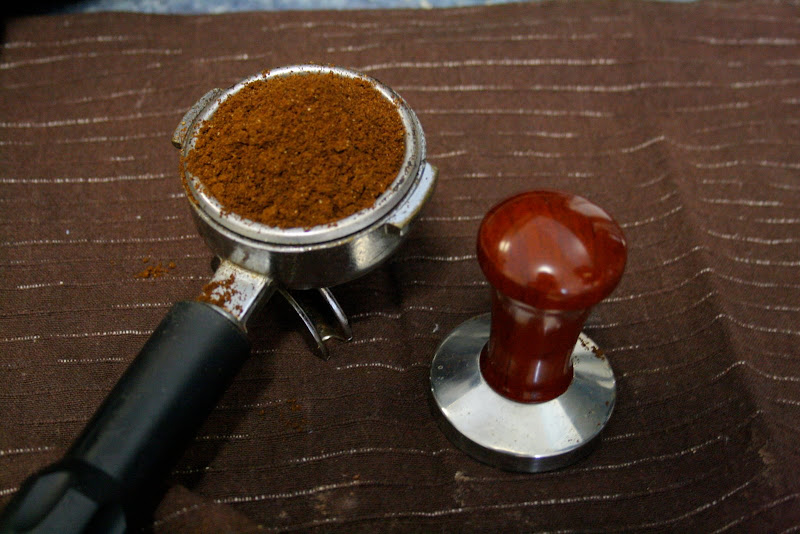Once you’ve got your supply of fresh beans and your grind sorted it’s time to make your coffee – the next step where coffee often fails is in the “dose” – in espresso preparation this is the amount of coffee ground and tamped into your portafiller basket. The portafiller is the fancy name for “the handle that goes into the machine.”
The amount of coffee used per cup is also important in all other methods of coffee preparation, but it is one of the most controllable variables in your coffee preparation routine. Some baristas seeking to control every variable to the nearest micro detail will even weigh the ground coffee before making their drinks. Others will develop a consistent routine to ensure they get the same result every time.
When it comes to espresso getting the dose wrong can have profound impacts on your extraction, too much and the coffee will stall or pour too slowly. The ideal for espresso is for about 30mL in 25-30 seconds, a shot that takes longer, called a ristretto, is thicker, oilier, and becoming increasingly popular in specialty cafes. Ristrettos can be achieved by increasing your dose.
The basic routine for espresso dosing is to grind your coffee into the portafiller basket until it is heaped over the top. A good tip at this point is to use the double shot basket even when you’re only going to use a single shot. It tastes better.
Bang it against a flat surface a few times (aim for the same number every time) to settle the coffee – you don’t want big gaps or different densities in the puck your coffee will form in the basket – having uniform density means the water has to travel through the coffee evenly.

Next, level off the coffee with a flat surface (use the same thing each time – most baristas use their fingers, but you can use the back of a bread knife or buy expensive dosing tools). Volume is more important than weight – different beans have different densities and it’s important to have the same volume of coffee in the basket each time rather than the same weight, but a ball park is 14gm for a double shot.
Then tamp (push down on) the coffee firmly – some people suggest tamping with 15kg of force (you can practice on bathroom scales, practice pushing down on them with your tamper/flat round surface until it reads 15kg or thereabouts). When the coffee is tamped properly you should be able to flip the portafiller upside down without getting coffee all over your bench, once you’ve got the coffee in the basket it’s time to extract your shot.
When it comes to dosing for your plunger coffee or filtered/percolated coffee there are ideal ratios of coffee to water – that are also best calculated using volume. For a plunger, also called a “French Press” or a presspot, the ratio is one heaped tablespoon per cup of coffee. Brewed coffee (percolaters, drip filters, etc) needs about two tablespoons for one and a half cups.